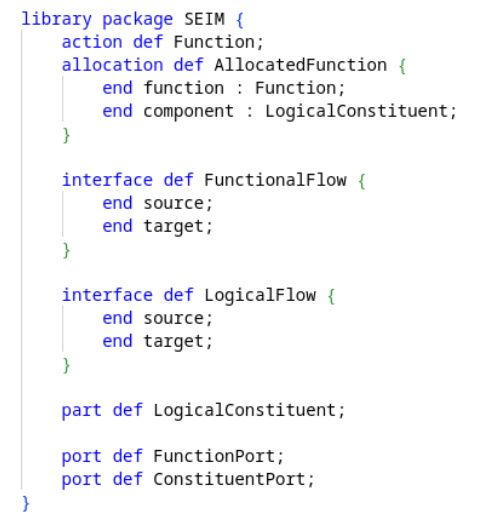Last December, we presented a prototype of a custom tool for the space industry, showcasing how SysON can be used to create user-friendly modeling environments aligned with specific methodologies.
This tool was developed as part of EasyMOD, a collaborative project supported by the European Space Agency (ESA), Airbus Defence and Space, Airbus Commercial Aircraft, HDGroup, and the French Government.
The EasyMOD Project
Led by IRT Saint Exupéry, the EasyMOD project set out to “improve the human/machine interactions in the use of MBSE models, by providing friendlier visualisation and review capabilities, modelling assistants and new kinds of hardware and software interfaces”.
A central challenge was to explore how MBSE tools could be customized to support collaboration among a wide range of stakeholders—many of whom are not MBSE experts—while also enhancing the productivity of system engineers.
Running from 2021 to 2024, the project focused on improving the review process of systems engineering data. It introduced innovative solutions for consistently reviewing heterogeneous MBSE models across multiple structural analyses, including Product Breakdown Structure, Functional Breakdown Structure and Functional Flows.
The proposed review process enables a Review Facilitator to define review objectives made up of textual content and interactive diagrams. Each diagram presents a specific viewpoint across one or more MBSE models, carefully selected to serve the review’s intent.
SysON, a Flexible-by-Design SysML v2 solution
SysON is an open-source graphical modeling tool for editing and visualizing SysML v2 models. Developed since 2024 by Obeo and the CEA (French Alternative Energies and Atomic Energy Commission), it is hosted by the Eclipse Foundation.
One of SysON’s key strengths lies in its flexibility, enabling support for domain-specific modeling methodologies and seamless integration with existing engineering environments.
- Extensibility: SysON supports SysML v2 libraries, allowing users to define domain-specific (e.g., avionics, automotive, railways) or cross-cutting (e.g., requirements, safety, V&V) concepts in a standard, non-intrusive way.
- Interoperability: It offers standard APIs that enable seamless integration with other tools and services supporting use cases such as model exchange, simulation, verification, and code generation.
- Customization: Built on Sirius Web, SysON allows the creation of tailored graphical editors designed for specific engineering roles. It is possible to define custom shapes,visual styles and custom tools for SysML v2 elements, all without needing to fork the tool.
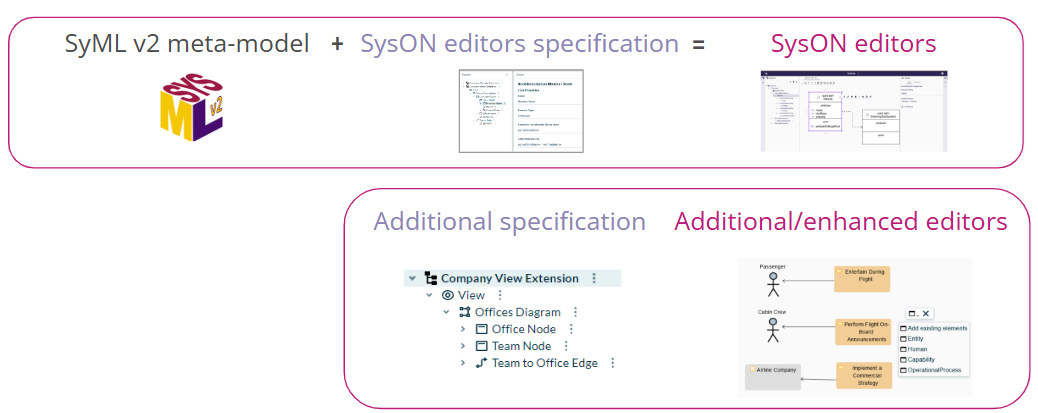
This flexibility reflects our vision at Obeo: for an MBSE approach to be both effective and widely adopted, it must rely on three key pillars:
- Support for your specific engineering concepts (the language);
- Support for your specific processes and expertise (the method);
- Support for your specific needs in guidance and productivity (the tool).
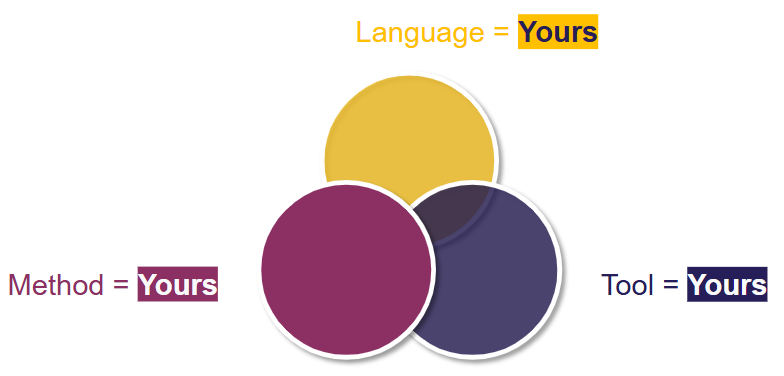
Extending SysON for EasyMOD
In EasyMOD, we leveraged SysON’s flexibility to implement a dedicated methodology for reviewing systems engineering data.
Originally defined by IRT SystemX in a previous project, this methodology is based on a shared vocabulary among stakeholders, independent of any specific MBSE authoring tool, and formalized by the SEIM (Systems Engineering Information Model) metamodel. For EasyMOD, this approach was tailored to meet ESA’s requirements for reviewing systems engineering artifacts.
Our work in EasyMOD focused on developing a web-based modeling tool that supports this methodology, is compliant with the SysML v2 standard, and is accessible to non-MBSE engineers. It includes:
- A SysML v2 library implementing the SEIM metamodel;
- Dedicated diagram editors for SEIM concepts;
- Helper tools to guide systems engineers throughout the review process.
All of these were developed as an add-on, with no modification or fork of SysON itself.
SysML v2 library
The SEIM library introduces core concepts such as:
- Functions represented as SysML v2 Actions;
- Logical Constituents represented as SysML v2 Parts;
- Their associations captured through Functional and Logical Flows.
Tailored diagram editors
The first diagram editor focuses on visualizing functions and their relationships, and provides dedicated tools to define new functions and flows.
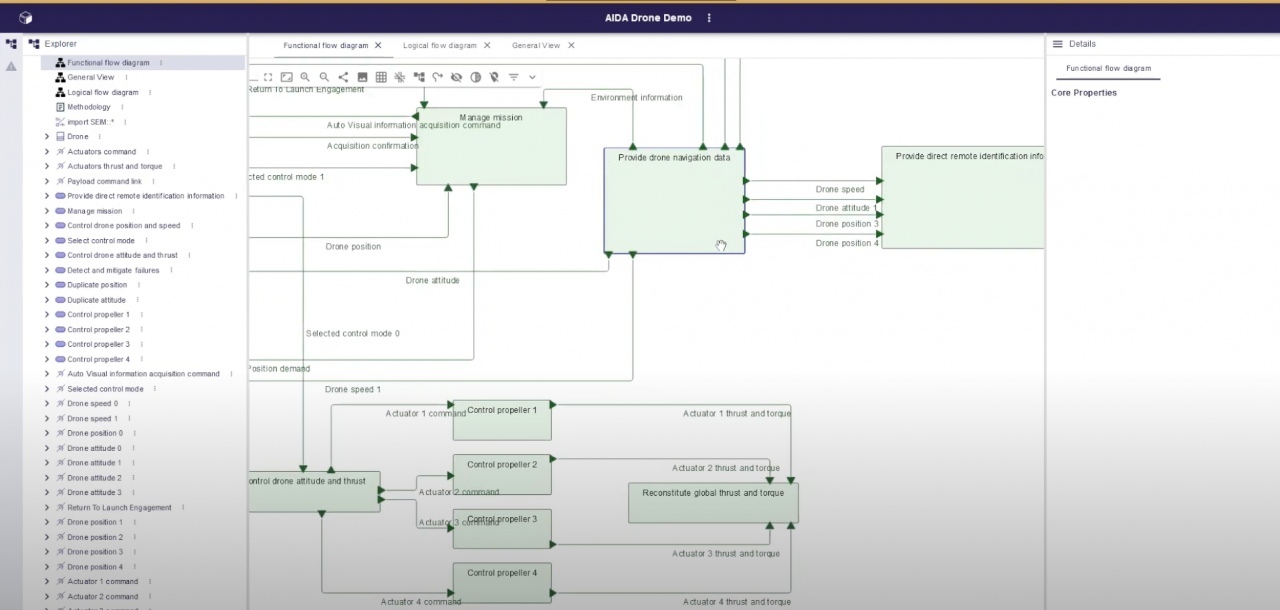
The second diagram editor presents the component structure, their interconnections, and the functions allocated to them.
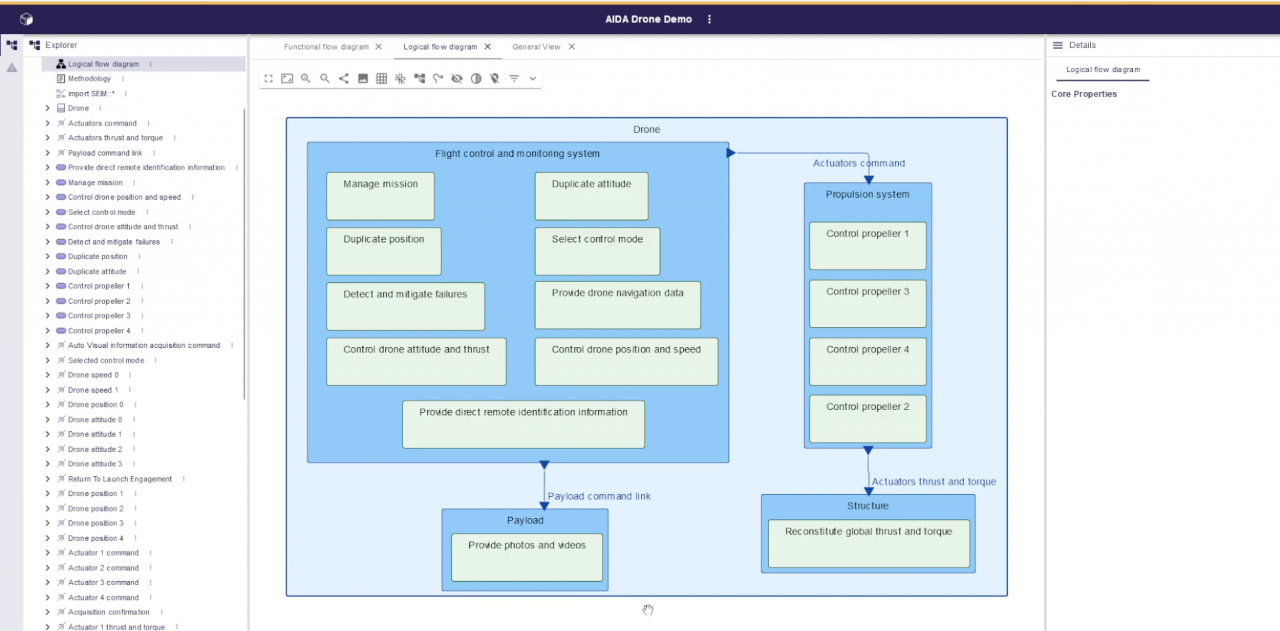
Though all elements are standard SysML v2 objects, they are rendered with custom shapes and colors based on their SEIM types. The same objects can also appear in general-purpose diagrams, using their standard SysML v2 representation.
Helper tools
We also developed a tool called the Allocation Cockpit, which provides an interactive view of the function-to-component allocation progress.
It includes:
- an interactive high-level chart,
- detailed tables that can be sorted and filtered.
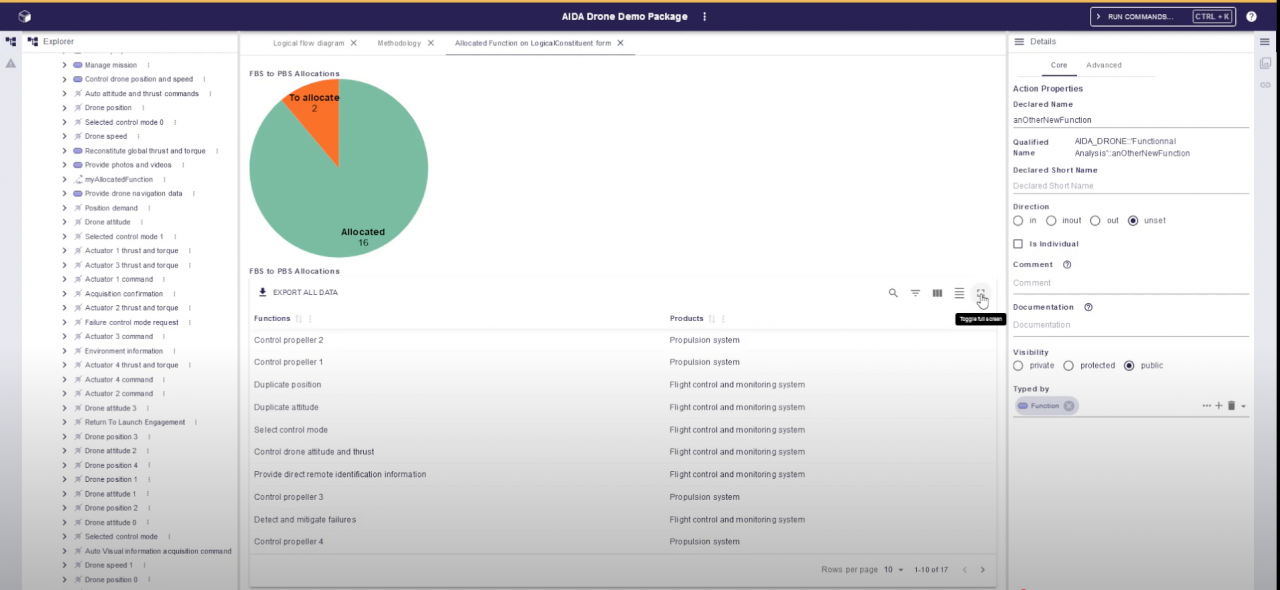
The tools in action!
You can see all these tools in action in the two videos below:
Conclusion
The EasyMOD project provided the opportunity to put SysON to the test in addressing real-world extensibility needs.
It validated our decision to build SysON on Sirius, whose flexibility allowed us to deliver targeted extensions, both graphically and in terms of user experience, while supporting domain-specific concepts tailored to the needs of systems engineering stakeholders.
This confirms SysON’s ability to support tailored methodologies on top of the SysML v2 language. It also opens up opportunities for integrating SysON with well-established MBSE practices, such as Arcadia, and for ensuring seamless interoperability with tools like Capella.

